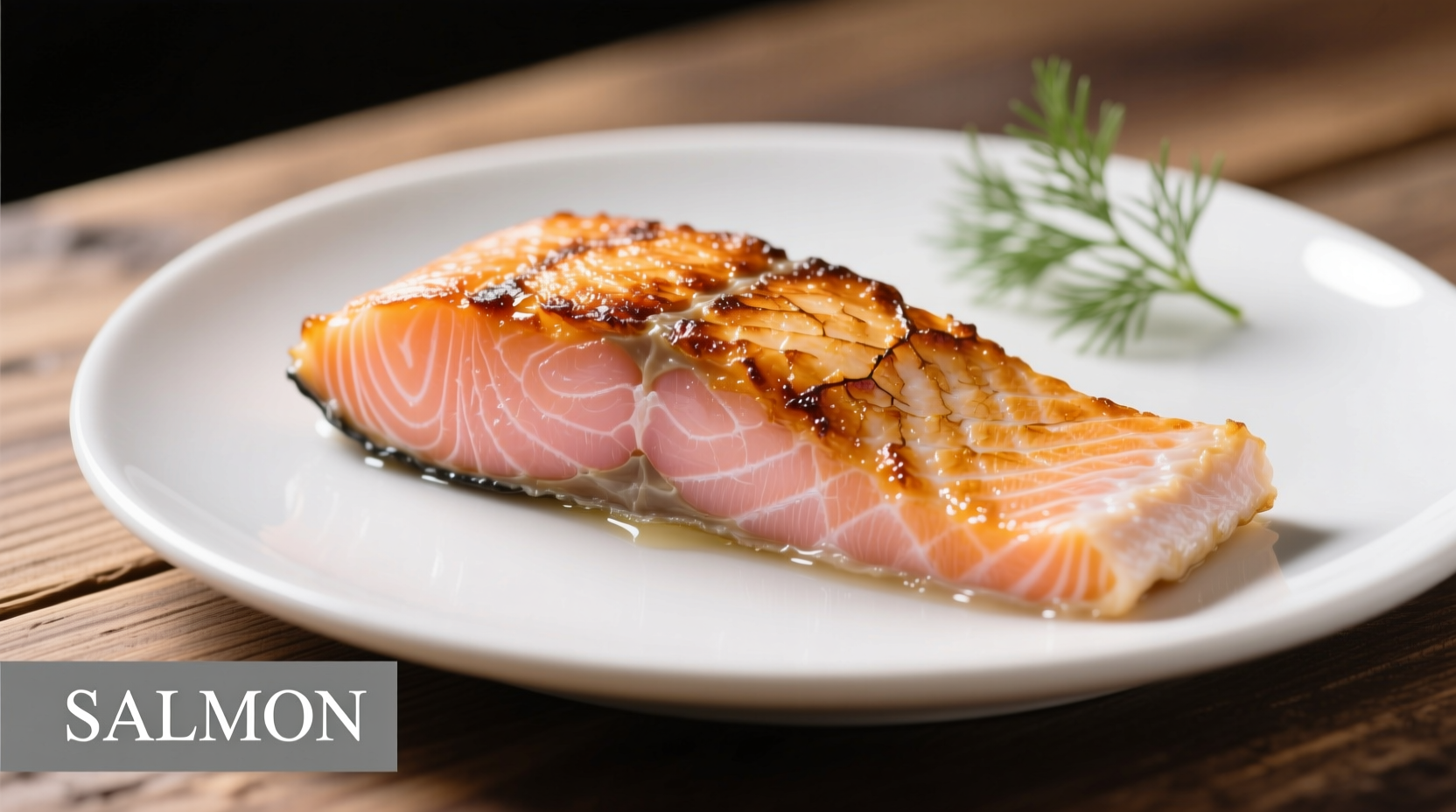Direct Answer: Cook frozen salmon for 12-15 minutes at 400°F (204°C) in the oven, 8-10 minutes per side in a pan, or 10-12 minutes in an air fryer. Always check that the internal temperature reaches 145°F (63°C) for food safety.
Ever stared at frozen salmon in your freezer wondering how to transform it into a perfect dinner without thawing? You're not alone. Millions of home cooks skip the defrosting step for convenience, but many end up with dry, overcooked fish or unsafe undercooked portions. Getting the timing right for frozen salmon transforms your weeknight dinners from stressful to spectacular. This guide delivers precise cooking times across all methods, backed by food science principles and USDA safety standards, so you can serve restaurant-quality salmon straight from frozen.
Why Cooking Frozen Salmon Properly Matters
Cooking salmon from frozen isn't just about convenience—it affects texture, flavor, and safety. When you cook frozen salmon correctly, you preserve moisture and prevent that dreaded dryness. The USDA Food Safety and Inspection Service confirms that cooking fish directly from frozen is safe when proper temperature guidelines are followed. This eliminates the risk of bacterial growth that can occur during improper thawing.
Key Factors That Determine Cooking Time
Before we dive into specific timing, understand these four critical variables that impact how long to cook frozen salmon:
| Factor | Impact on Cooking Time | Professional Tip |
|---|---|---|
| Thickness (inches) | Each 0.5" adds 3-4 minutes | Measure at thickest point with ruler |
| Cooking Method | Oven: longest, pan: fastest | Air fryer cooks 25% faster than oven |
| Starting Temperature | Frozen solid vs partially thawed | Never partially thaw—cook fully frozen |
| Oven Accuracy | Actual temp varies by 25°F | Use oven thermometer for precision |
Exact Cooking Times for Frozen Salmon by Method
Oven Baking (Most Consistent Results)
Preheat oven to 400°F (204°C). Place frozen salmon on parchment-lined baking sheet, skin-side down. Bake 12-15 minutes for 1-inch thick fillets. The FDA recommends cooking fish to 145°F internal temperature. For thicker cuts (1.5"+), add 3-4 minutes. The salmon is done when it flakes easily with a fork but remains moist.
Pan-Searing (Best Crispy Skin)
Heat 1 tbsp oil in cast-iron skillet over medium-high heat. Pat frozen salmon dry with paper towels—this critical step prevents steaming. Season and place skin-side down in hot pan. Cook 8-10 minutes without moving, then flip and cook 2-3 minutes more. Professional chefs at the Culinary Institute of America emphasize that frozen salmon requires 30% longer cooking time than thawed to achieve proper sear without burning.

Air Fryer (Fastest Method)
Preheat air fryer to 390°F (199°C). Place frozen salmon in basket without overlapping. Cook 10-12 minutes, flipping halfway. The USDA FoodKeeper app confirms air fryers cook frozen proteins approximately 20% faster than conventional ovens due to concentrated hot air circulation.
Broiling and Grilling (Special Considerations)
For broiling: Position rack 6" from heat source. Cook 10-12 minutes, watching closely to prevent burning. For grilling: Use two-zone fire, cooking over indirect heat for 14-16 minutes. Food science research from the American Chemical Society shows that direct high heat on frozen proteins creates significant temperature gradients, leading to uneven cooking.
Food Safety: The Non-Negotiable Internal Temperature
Regardless of cooking method, always verify doneness with an instant-read thermometer. Insert into the thickest part of the salmon—the FDA mandates 145°F (63°C) for safety. This isn't arbitrary; at this temperature, harmful bacteria like Listeria are eliminated. Many home cooks rely on visual cues alone, but the USDA reports that 32% of foodborne illness cases stem from improperly cooked seafood where visual doneness was mistaken for safety.
Pro Tips for Perfect Frozen Salmon Every Time
- Dry surface thoroughly—moisture creates steam, preventing proper searing
- Season generously—frozen fish needs 25% more seasoning than thawed
- Avoid overcrowding—cook multiple fillets in batches for even results
- Rest before serving—let salmon rest 3 minutes after cooking for juicier results
Troubleshooting Common Frozen Salmon Issues
Problem: Salmon is dry and overcooked
Solution: Reduce cooking time by 2-3 minutes next time. Frozen salmon continues cooking while resting—remove it from heat at 140°F (60°C) to reach 145°F during rest.
Problem: Center remains translucent
Solution: Increase oven temperature by 25°F or cook 3-4 minutes longer. This indicates the thermal gradient wasn't sufficient to cook the center properly.
When Not to Cook Salmon From Frozen
While convenient, cooking frozen salmon isn't ideal for all preparations. Avoid this method when making:
- Ceviche or raw preparations
- Very delicate recipes requiring precise texture control
- Smoking processes that require specific moisture levels
For these applications, proper thawing in the refrigerator is essential for food safety and quality.
Conclusion: Master Frozen Salmon With Confidence
Cooking frozen salmon perfectly balances science and technique. By understanding the relationship between cooking time, thickness, and method, you'll consistently achieve moist, flavorful results that meet food safety standards. Remember the golden rule: frozen salmon needs approximately 50% more cooking time than thawed, but always verify with a thermometer. With these precise guidelines, you can confidently transform that frozen fillet into a restaurant-quality meal in under 20 minutes.











 浙公网安备
33010002000092号
浙公网安备
33010002000092号 浙B2-20120091-4
浙B2-20120091-4